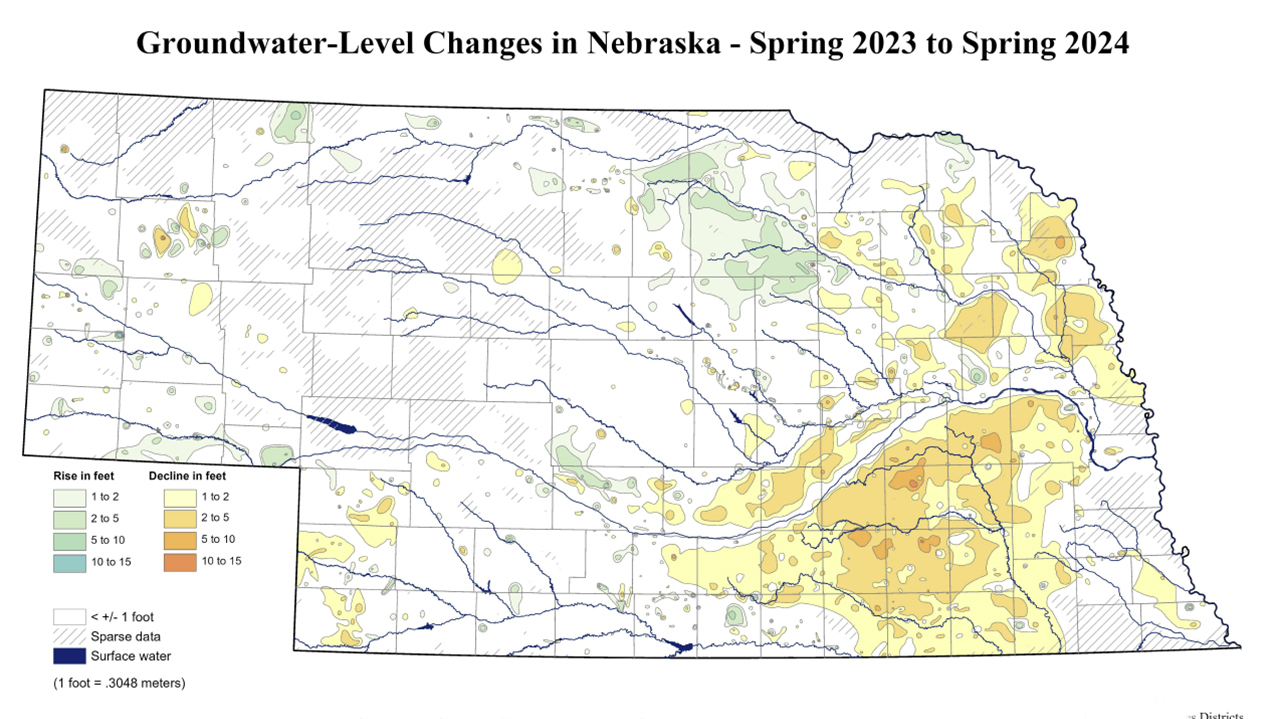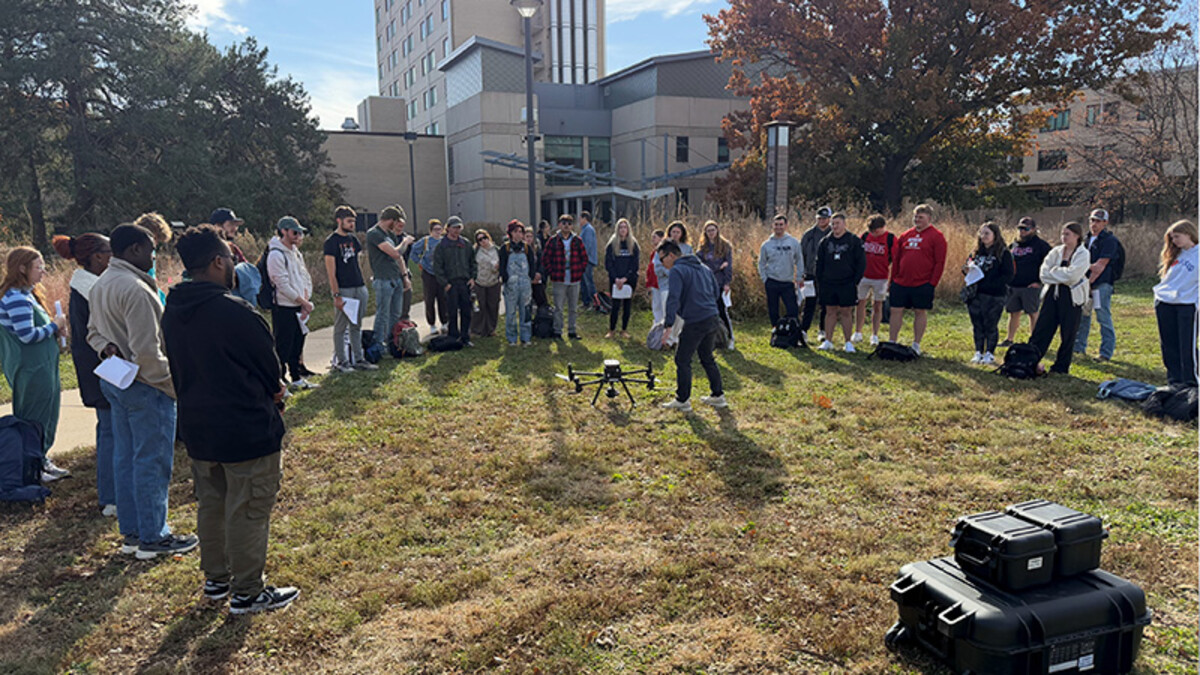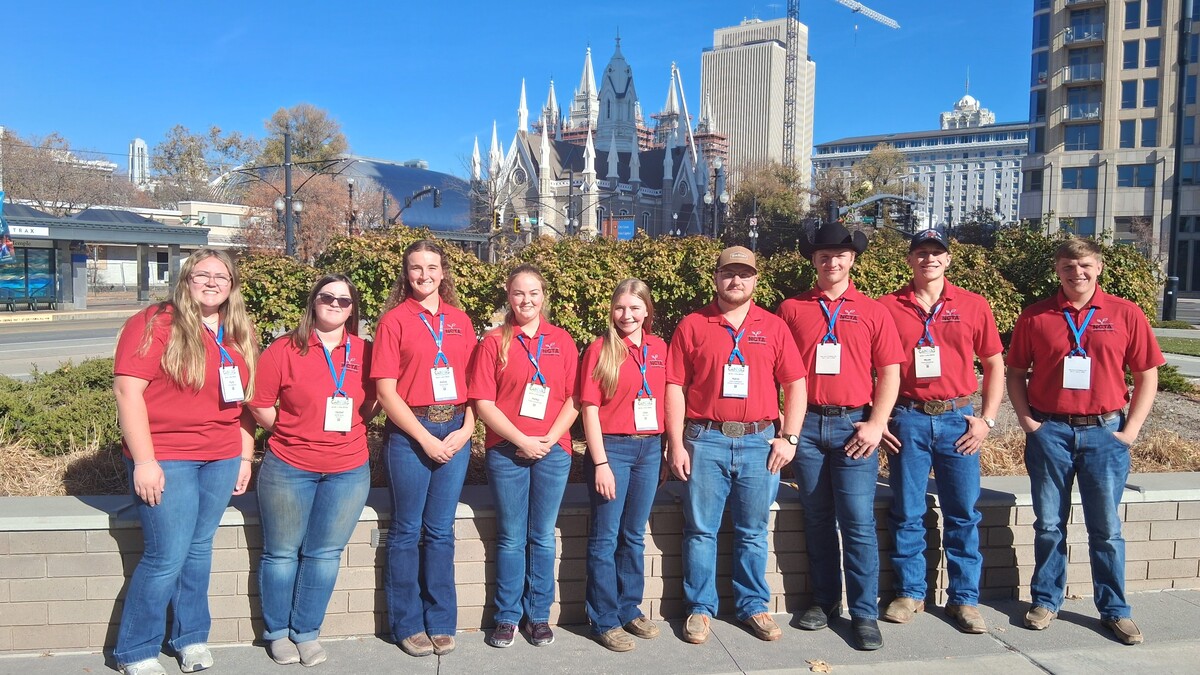
The annual Nebraska Statewide Groundwater-Level Report from the Conservation and Survey Division in the University of Nebraska–Lincoln’s School of Natural Resources shows that groundwater levels in the eastern half of the state continue to decline following several years of persistent drought.
Statewide, groundwater levels declined on average 0.52 feet in spring 2024, even though precipitation was above average in the western half of the Cornhusker State. Despite the declines, Nebraska has significantly more groundwater than the other states atop the High Plains aquifer system.
Variations in groundwater levels and precipitation are intimately linked. Precipitation is the main source of aquifer replenishment in Nebraska, partially replacing water removed from the ground for irrigation and domestic use. Hotter and drier growing seasons result in a greater need for irrigation while providing less water for recharge. Both effects can cause a decline in groundwater levels. However, years with above-average precipitation provide more water for groundwater recharge and typically less pumping for irrigation. These effects generally cause a rise in groundwater levels.
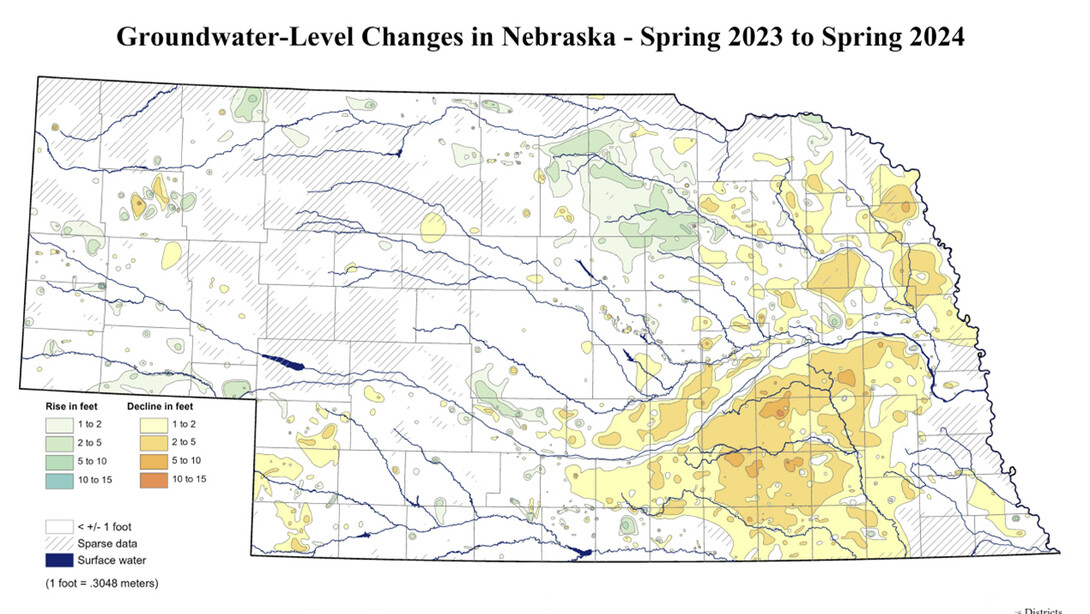
Nearly 5,000 wells were measured in spring 2023 and spring 2024 to monitor changes in groundwater levels in Nebraska. Sixty-one percent of the wells recorded a groundwater-level decline in spring 2024. The largest declines, exceeding 10 feet, occurred in the eastern half of Nebraska, where precipitation was generally below average during the same period. Much of Nebraska experienced some level of drought for most of the preceding five years. However, easing drought conditions during the 2023 growing season in western Nebraska drove local rises in groundwater levels.
Nebraska has more than 99,000 active irrigation wells, providing water to support the agricultural economy. Pumping water from aquifers through a vast number of wells can be detrimental to the long-term sustainability of water resources. However, Nebraska has a nation-leading system of groundwater management in its 23 Natural Resources Districts. The districts regulate groundwater with comprehensive regional management plans that undergo periodic updates. Still, recent and long-term groundwater-level declines in some parts of the state are concerning. Some wells in these areas may eventually go dry or need to be drilled deeper.
The annual report’s long-term change maps — spanning pre-groundwater-irrigation times to the present — verify the overall abundance of groundwater in Nebraska. But high-magnitude local changes in groundwater levels, from declines exceeding 130 feet to rises exceeding 120 feet, have also been apparent in successive iterations of the same map. Groundwater levels in most of the state have experienced a net change of less than 20 feet since predevelopment times.
Parts of Chase, Perkins, Dundy and Box Butte counties, in contrast, have experienced major, sustained declines in groundwater levels due to a combination of factors. Irrigation wells are notably dense in these counties, annual precipitation is comparatively low, and there is little or no surface-water recharge to groundwater there.
The report was authored by Aaron Young, Mark Burbach, Susan Lackey, R. M. Joeckel and Jeffrey Westrop, all researchers in the Conservation and Survey Division.
A free PDF of the report can be downloaded here. Printed copies can be purchased for $7 at the Nebraska Maps and More Store, 3310 Holdrege St. Phone orders are accepted at 402-472-3471.
Share
News Release Contact(s)
Related Links
Tags
High Resolution Photos
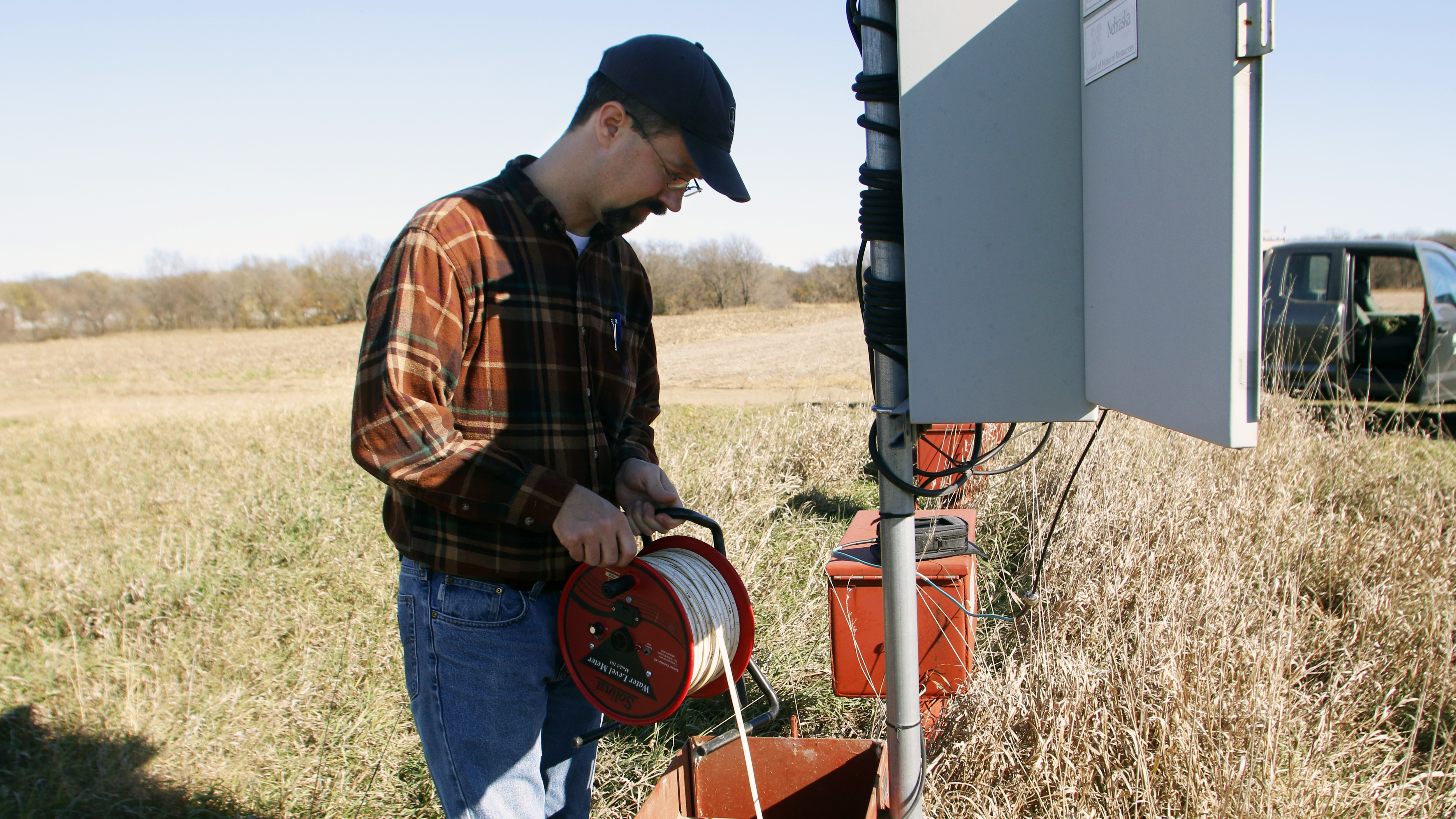
HIGH RESOLUTION PHOTOS
